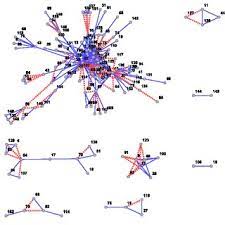NETWORK ANALYSIS OF THE KYIV BYLYNY CYCLE — EAST SLAVIC EPIC NARRATIVES

In our last conversation Ralph mentioned an upcoming paper exploring the network connections and relationships contained in the Kyiv bylyny story cycle. The oldest byliny belong to a cycle dealing with the golden age of Kievan Rus in the 10th–12th century. They centre on the deeds of Prince Vladimir I and his court. One of the favourite heroes is the independent Cossack Ilya of Murom, who defended Kievan Rus from the Mongols. I have included a link to the paper below.
Ralph says:
Why Ukraine is closer to Ireland than to Putin’s Russia
On the 12th of July 2021, Vladimir Putin published an apologia for his “special operation” in Ukraine. It was entitled: “On the Historical Unity of Russians and Ukrainians.” In it, Putin claims “the idea of Ukrainian people as a nation separate from the Russians has no historical basis – and could not have any.” In positioning Ukraine as part of Russia, Putin also sought to drag the country away from the rest of Europe.
A paper has just been published refuting Putin’s distorted view of Ukraine’s identity. It is based on mathematical investigations into the East Slavic epic narratives that Putin invokes in his essay. These narratives are called bylyny and the paper shows the network of the Kyiv cycle fits very well with those from other nations – especially heroic ones. In network terms Kyivan bylyny are in many ways like Ireland’s heroic tradition.
Read the paper

Abstract
In recent times, the advent of network science permitted new quantitative approaches to literary studies. Here, we bring the Kyiv bylyny cycle into the field — East Slavic epic narratives originating in modern-day Ukraine. By comparing them to other prominent European epics, we identify universal and distinguishing properties of the social networks in bylyny. We analyze community structures and rank most important characters. The method allows to bolster hypotheses from humanities literature — such as the position of Prince Volodymyr — and to generate new ones. We show how the Kyiv cycle of bylyny fits very well with narrative networks from other nations — especially heroic ones. We anticipate that, besides delivering new narratological insights, this study will aid future scholars and interested public to navigate their way through Ukraine’s epic story and identify its heroes.

Thank you for your wonderful article!
It is very interesting and inspiring!
Do you plan to continue researching bylynas
using netfork analysis or other computer methods?